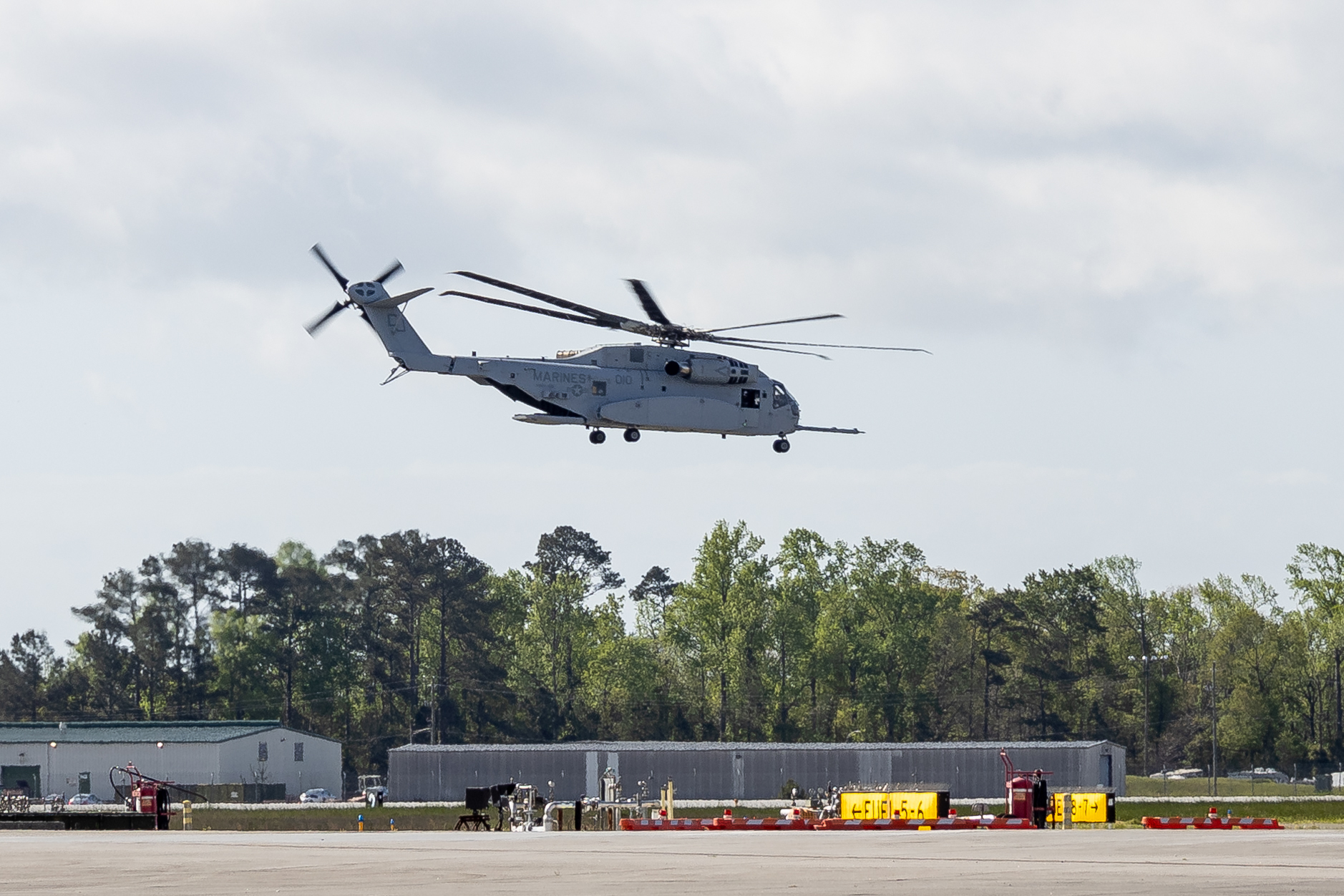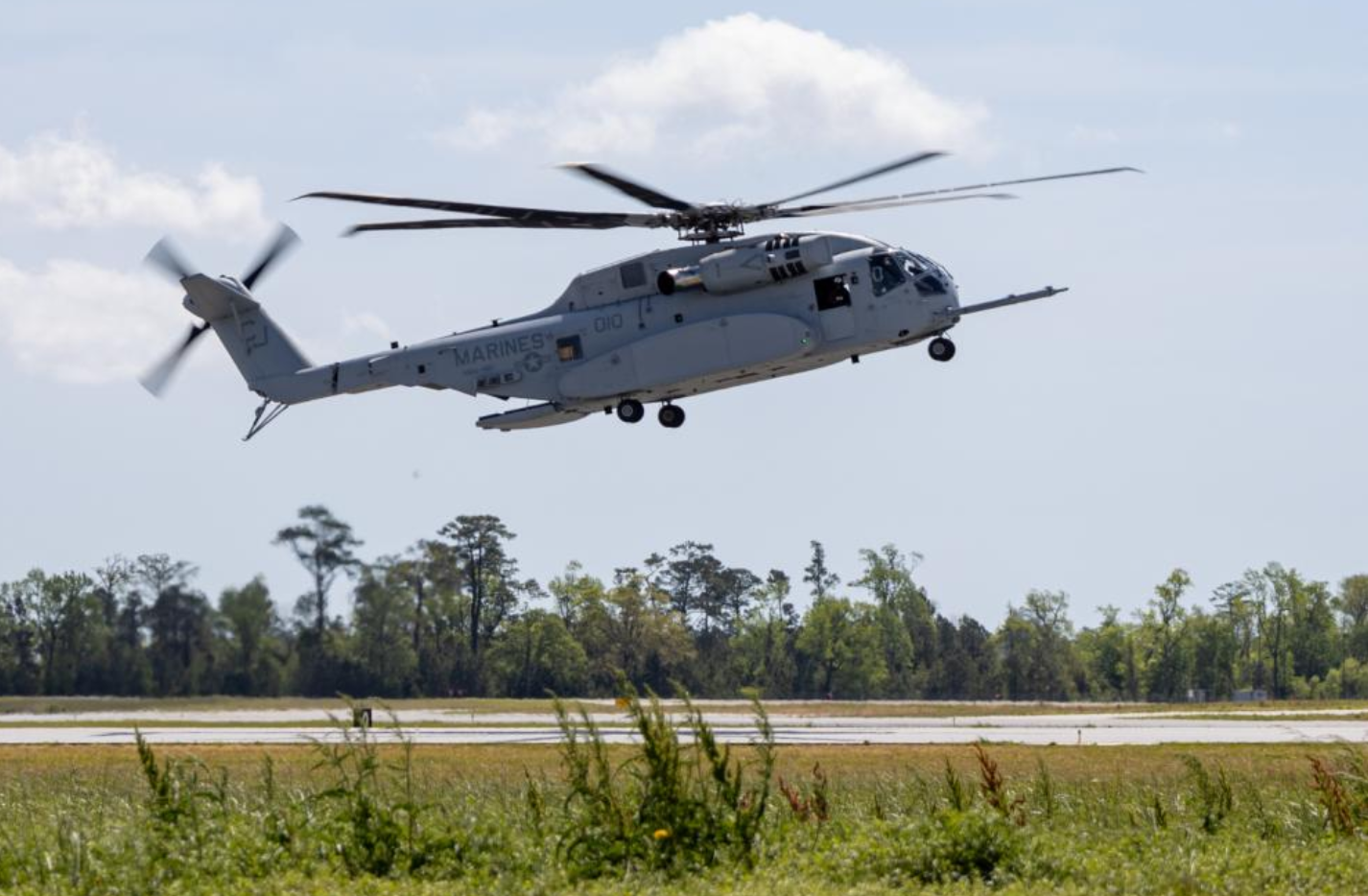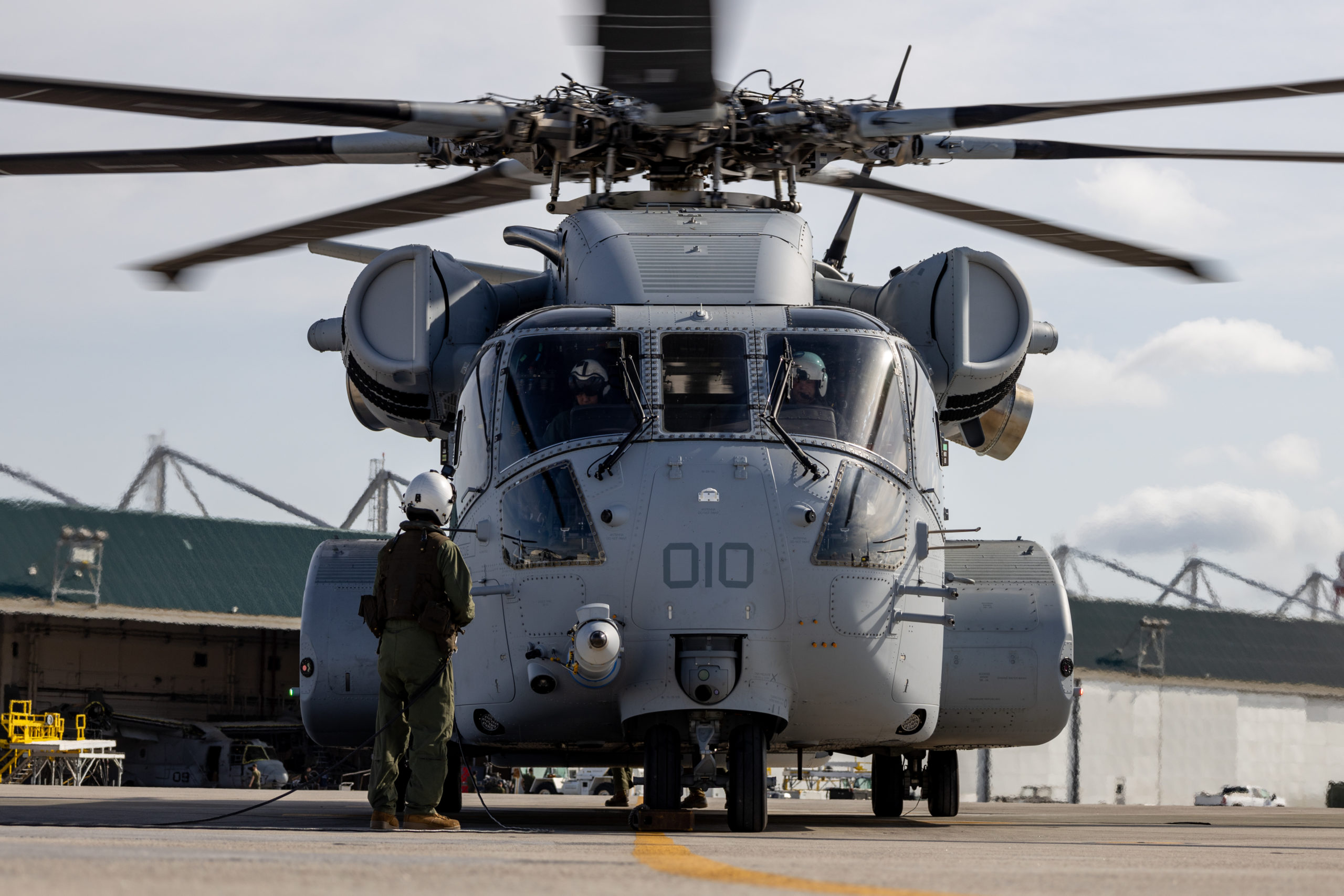According to a story published by the USMC written by Maj. Jorge Hernandez and published on April 25, 2022:
Deputy Commandant for Aviation Lt. Gen. Mark Wise announced the Marine Corps has achieved initial operational capability in the CH-53K King Stallion on April 22, 2022. This plan supports Gen. Berger’s Force Design 2030 by improving capabilities and restructuring Marine Corps aviation for the future fight.
In addition to meeting IOC criteria, the CH-53K successfully completed a thorough initial operational test and evaluation period that resulted in over 3,000 mishap free hours flown in various challenging environments and terrain.
“My full confidence in the CH-53K’s ability to execute the heavy lift mission is the result of successful developmental and operational testing conducted by Air Test and Evaluation Squadron (HX) 21 and Marine Operational Test and Evaluation Squadron (VMX) 1” said Wise.
The CH-53K is an optimized vertical, heavy lift, sea-based, long range solution for the naval force and will immediately provide nearly three times the lift capability of the CH-53E, with the ability to transport one hundred percent of the vertical Marine Air-Ground Task Force (MAGTF). Per the Commandant’s Force Design 2030 Annual Update, the CH-53K will complement connectors that will enable littoral maneuver and provide logistical support to a widely disaggregated naval force.
“The success to date of the CH-53K is a reflection of the hard work and effort by the Marines, sailors, and civilians at VMX-1, H-53 Program Office (PMA-261), and Marine Heavy Helicopter Squadron (HMH) 461, and the support we have received over many years from across the Department of the Navy and our industry partners,” said Wise.
The King Stallion boasts an engine that produces 57% more horsepower with 63% fewer parts relative to its predecessor, which translates to an expanded capability to deliver internal and external cargo loads, providing the commander a mobility and sustainment capability the MAGTF has never had before.
The most notable attribute of the King Stallion is its ability to maintain increased performance margins in a degraded aeronautical environment, for example at higher altitudes, hotter climates and carrying up to 27,000 lbs. out to 110 nautical miles; whereas, the CH-53E would be limited to a 9,628-pound external load in the same environment.
The Marine Corps plans to deploy the first CH-53K Marine Expeditionary Unit (MEU) detachment in fiscal year 2024, setting the initial conditions for sustained CH-53K deployments in support of MEUs.
Much like the Osprey provided a driving force for USMC transformation generated from 2007 on, and then was accelerated by the introduction of the F-35B, the CH-53-K spearheads the third phase of USMC transformation since 2007.
And this is how the then CG of II MEF put it in an interview we did with him last year:
LtGen Beaudreault: “By 2024, we start replacing our fighters at 2nd MAW with F-35s and should be full up by 2030. USMC F-35s have been prioritized for the Pacific, but this creates some challenges for us.
“The Harriers and the F-35s are not the same at all, and our deployments in the Atlantic region without F-35s creates a gap.
“But we are getting the CH-53Ks into our force as the initial operating force which will clearly augment our ability to provide greater capability to operate in the airsea-ground domain as well.”
For our book focused on the USMC transformation path, see the following:
The USMC Transformation Path: Preparing for the High-End Fight





